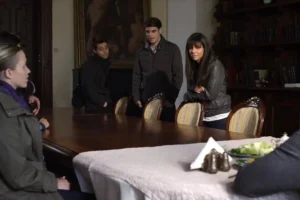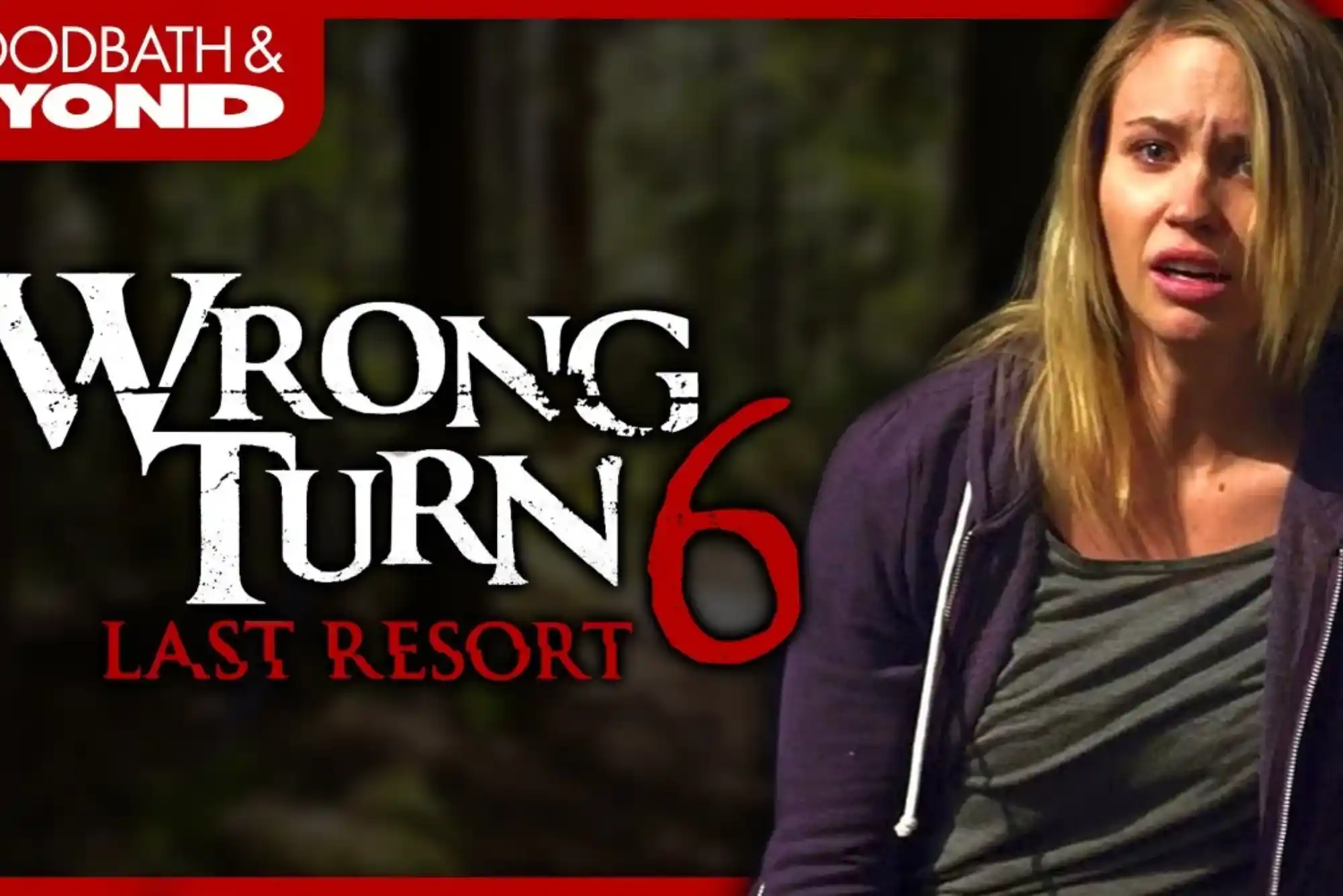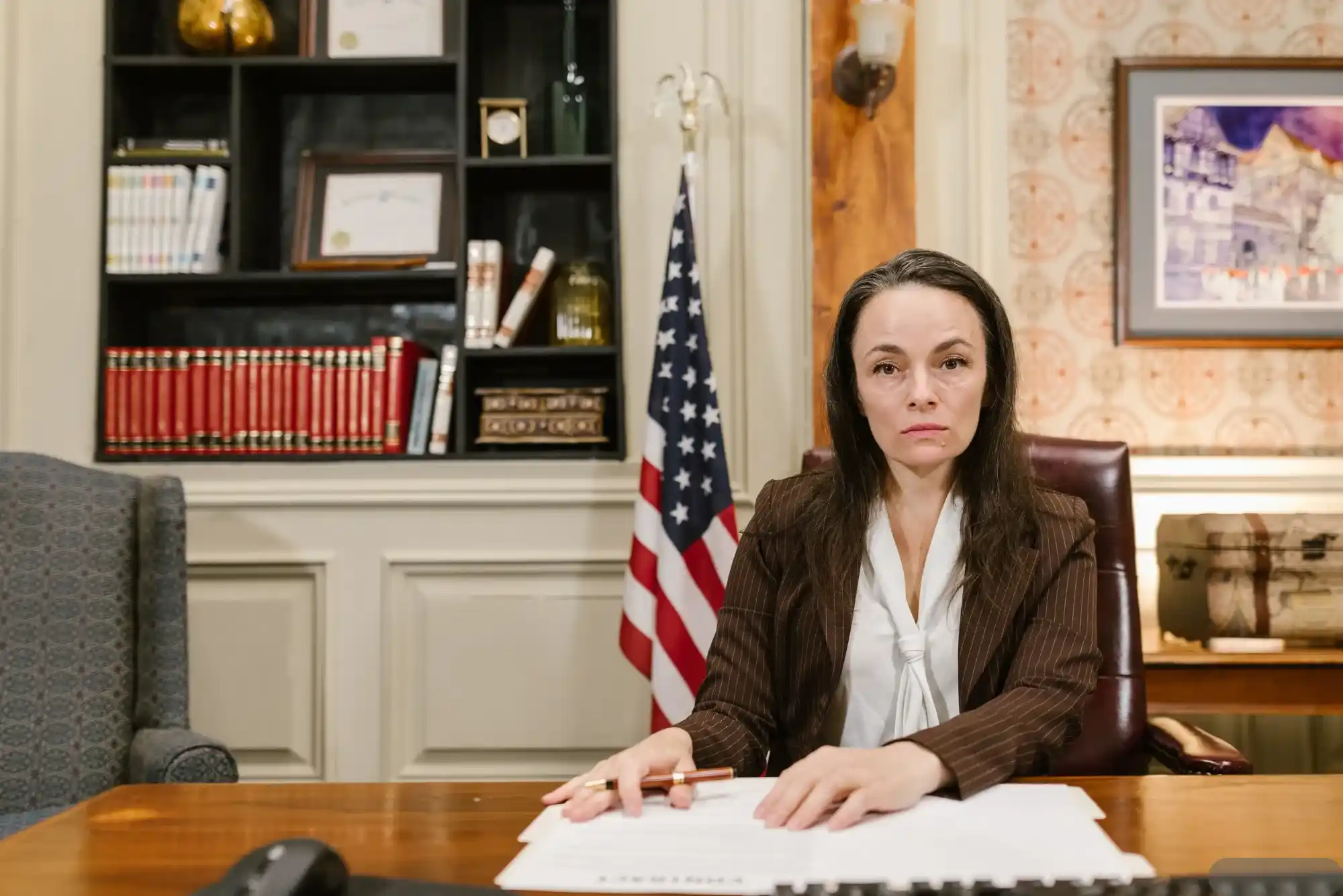The Wrong Turn franchise has intrigued horror fans since its debut in 2003, with its focus on survival horror, rural terror, and brutal slasher elements. Among its sequels, Wrong Turn 6: Last Resort stands out for intensifying the fear factor, placing characters in nerve-wracking situations in a remote and terrifying setting. This film, released in 2014, continues to play on the core elements of the franchise, keeping the tension alive for its dedicated fans. Here, we explore the details of Wrong Turn 6: Last Resort, including its plot, character dynamics, setting, and how it differs from its predecessors.
Plot Summary of Wrong Turn 6: Last Resort
Wrong Turn 6: Last Resort opens with a scene reminiscent of previous Wrong Turn films—isolated, suspenseful, and ominous. The story follows Danny, a young man who unexpectedly inherits an abandoned hotel in the isolated, rural regions of West Virginia. Along with his friends, Danny travels to this remote property, intending to understand his family legacy. However, the group soon realizes that the property is not as vacant as it appears.
Danny discovers that his extended family, the Hillickers, have a twisted, murderous background. The family members in Wrong Turn 6: Last Resort are terrifying in their unwavering loyalty to their bloodline and disturbing traditions, embracing brutal acts to protect their secluded existence. As Danny faces his internal conflict between his newfound identity and his affection for his friends, he becomes torn between loyalty to family and the instinct to survive.
The Setting – Isolation and Terror in a Remote Hotel
The setting of Wrong Turn 6: Last Resort is crucial to its atmospheric horror. The remote hotel is isolated, surrounded by dense woods and unfamiliar paths, amplifying the feeling of inescapability. This isolated backdrop mirrors the mental and emotional seclusion that Danny experiences as he becomes more entangled in his family’s dark history. For the characters, this isolation brings a psychological horror element, as there is no possibility of escaping or receiving outside help.
This hotel serves as a home for Danny’s newly discovered family and as a trap for those who enter. Unlike previous films in the franchise that primarily take place in forested areas, Wrong Turn 6: Last Resort centers around this abandoned property, which adds a claustrophobic intensity to the unfolding horror.
Character Dynamics – Family Loyalty and Descent into Madness
In Wrong Turn 6: Last Resort, Danny is at the heart of the narrative, battling his conscience as he uncovers his family’s sadistic tendencies. This moral dilemma adds depth to the horror, as viewers witness Danny’s internal struggle to resist the allure of his family legacy. The tension between Danny and his friends, who begin to see the danger around them, heightens the stakes. This emotional conflict is particularly emphasized in Danny’s shifting allegiance, making it one of the most emotionally complex installments in the series.
Characters like Jackson and Sally, Danny’s cousins, represent the twisted pride the family holds in their practices. They embody a generational commitment to secrecy, valuing family traditions over individual morality. Their influence on Danny blurs the line between familial loyalty and moral decay, highlighting the psychological aspects of horror in Wrong Turn 6: Last Resort.
Themes and Symbolism – Inheritance and Choice

A prominent theme in Wrong Turn 6: Last Resort is inheritance, which is both literal and metaphorical in Danny’s case. As he inherits the hotel, he is also faced with the weight of his family’s blood-stained legacy. The film suggests that inheritance extends beyond material possessions; it can encompass values, traits, and burdens. Danny’s initial eagerness to learn about his roots is soon overshadowed by the horror of what his family represents. This theme questions whether one’s identity is determined by blood or by personal choice—a powerful internal conflict for Danny.
Choice is another recurring theme in Wrong Turn 6: Last Resort, as Danny’s decisions ultimately shape his destiny. His struggle with choosing between his friends and his family’s legacy echoes a classic horror trope: the descent into darkness through personal compromise. This theme adds psychological horror, forcing viewers to question what they would do in Danny’s situation.
Comparison with Previous Films in the Wrong Turn Franchise
The Wrong Turn series is known for its slasher roots, with each installment bringing new ways to terrify audiences through vicious killers and isolated settings. Wrong Turn 6: Last Resort is distinct from earlier films due to its exploration of psychological horror, adding layers to the franchise’s trademark gore and brutality. Unlike previous films that largely focus on a straightforward “escape-or-die” scenario, this installment introduces deeper character development and emotional complexity.
While earlier films such as Wrong Turn 3 and Wrong Turn 4 predominantly focus on survival horror, Wrong Turn 6: Last Resort emphasizes the psychological impact of isolation and family pressure on Danny. By introducing a moral dilemma, the film diverges from pure slasher elements and leans towards psychological horror, adding a unique twist to the established formula of the franchise.
Cinematography and Direction
Directed by Valeri Milev, Wrong Turn 6: Last Resort utilizes close-up shots and shadowy lighting to create an unnerving sense of proximity to danger. The camera work often places the audience in the character’s position, amplifying the claustrophobia of the hotel’s dark corridors. Additionally, the use of muted colors and the eerie silence of the surroundings add to the unsettling atmosphere, enhancing the horror elements and creating a sense of dread.
The director also uses contrasting visuals to highlight Danny’s transformation—from bright, open scenes with his friends to the darker, shadow-laden scenes with his family. This shift in cinematography mirrors his descent into the family’s twisted worldview, intensifying the horror experience.
Reception and Audience Reaction
Upon its release, Wrong Turn 6: Last Resort received mixed reactions from audiences and critics. Some fans of the franchise appreciated its psychological approach, noting that it offered something fresh beyond the usual gore and survival themes. However, others felt that the film deviated too much from the traditional slasher style, emphasizing moral ambiguity over horror action.
The film’s graphic content and disturbing themes, combined with its slower pacing compared to previous installments, divided audiences. While some appreciated the new depth it brought to the franchise, others preferred the straightforward horror that defined earlier films in the series.
Legacy and Impact within the Horror Genre
Despite its divisive reception, Wrong Turn 6: Last Resort has become a topic of discussion among horror fans, particularly those interested in horror films that blend slasher elements with psychological exploration. Its emphasis on family loyalty, identity crisis, and the pull between good and evil makes it a distinctive entry in the Wrong Turn franchise, contributing to its unique place within the horror genre. By shifting away from pure gore and incorporating complex character dynamics, the film engages audiences beyond mere shock value, posing questions about identity and morality.\
Wrong Turn 6: Last Resort takes the franchise in a different direction, blending familiar horror elements with new layers of psychological tension. Danny’s journey from curious inheritor to morally conflicted descendant of a sinister bloodline adds an emotional complexity that resonates with audiences. Although it may not appeal to all fans of the original slasher formula, the film succeeds in expanding the franchise’s themes, making it a notable addition to the Wrong Turn series. For horror enthusiasts, Wrong Turn 6: Last Resort remains a unique experience, adding a chilling layer of family loyalty and identity crisis to the classic survival horror narrative.




